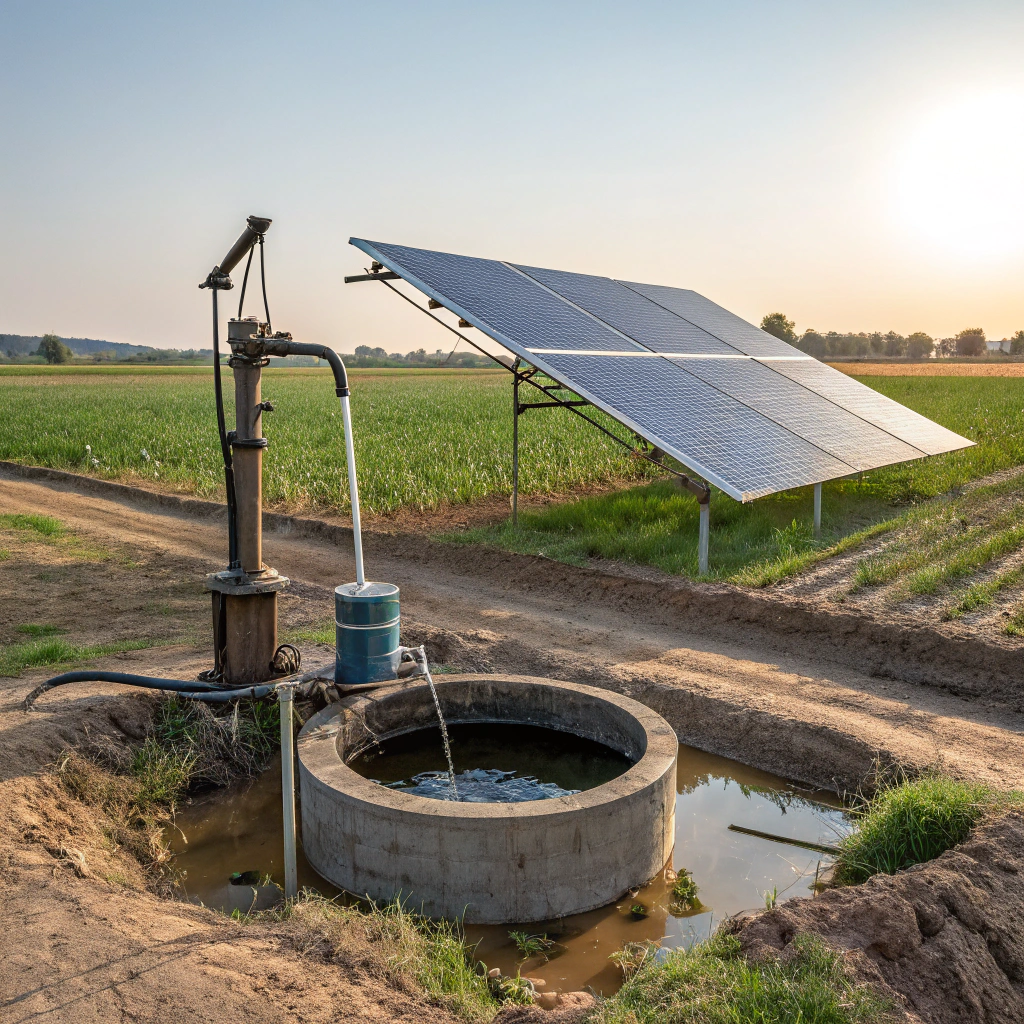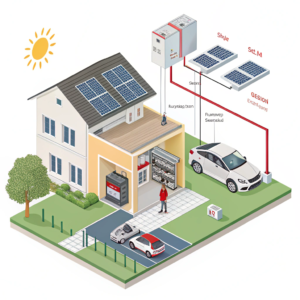How to Select and Use an Efficient and Reliable Solar Water Pump System?
•
How to Select and Use an Efficient and Reliable Solar Water Pump System?
Struggling with unreliable water access and skyrocketing electricity costs? Solar water pumps offer sustainable, cost-effective solutions for remote locations and eco-conscious users.
Select efficient solar water pump systems by matching pump type to water needs, ensuring proper PV module power compatibility, and following professional installation guidelines for optimal long-term performance and reliability.

Having worked with solar water systems for over a decade, I've witnessed firsthand how the right pump selection can transform water access challenges into sustainable solutions. From remote agricultural fields to residential applications, the key lies in understanding your specific requirements and matching them with appropriate technology. Let me walk you through the essential considerations that will ensure your solar water pump system delivers reliable performance for years to come.
Choosing the pump type based on water usage requirements: submersible pump, surface pump, or deep well pump?
Ever wondered which pump type will best serve your water needs while maximizing solar efficiency?
Choose submersible pumps for deep wells (over 25 feet), surface pumps for shallow water sources, and deep well pumps for depths exceeding 100 feet, based on your specific water usage requirements and source depth.
Understanding Pump Types and Applications
When I first started installing solar water systems, I made the mistake of recommending a surface pump for a 40-foot well. The client's frustration was palpable when water flow was practically non-existent. That experience taught me the critical importance of matching pump type to application.
Submersible pumps excel in wells 25-100 feet deep, sitting underwater and pushing water up efficiently. I've found them ideal for residential use and small-scale irrigation. Surface pumps work best for shallow sources under 25 feet - perfect for ponds, streams, or shallow wells. For the deepest applications exceeding 100 feet, deep well pumps are your only viable option.
| Pump Type | Depth Range | Best Applications | Key Advantages |
|---|---|---|---|
| Surface | 0-25 feet | Ponds, streams, shallow wells | Easy maintenance, lower cost |
| Submersible | 25-100 feet | Residential wells, irrigation | High efficiency, quiet operation |
| Deep Well | 100+ feet | Deep aquifers, commercial use | Maximum lifting capability |
The water usage requirements also dictate pump selection. For household use requiring 500-1000 gallons daily, a smaller submersible pump suffices. Agricultural irrigation demanding 5000+ gallons necessitates higher-capacity systems. I always calculate daily water needs first, then select pump capacity with 20% safety margin to account for cloudy days.
How to determine if the power matching between photovoltaic modules and the pump is reasonable?
Confused about whether your solar panels can actually power your chosen pump effectively?
Ensure power matching by calculating pump wattage requirements, selecting PV modules with 25-30% excess capacity, and considering system voltage compatibility for optimal energy transfer and reliable operation.
Calculating Power Requirements
Power matching between photovoltaic modules and pumps is like pairing an engine with a car - get it wrong, and performance suffers dramatically. I learned this lesson when a client's 500W pump struggled with 400W of solar panels during overcast conditions.
The fundamental calculation starts with pump power consumption. Most solar pumps list their wattage, but I always verify actual consumption under load. A "300W" pump might actually draw 350W during startup or high-head conditions.
Sizing Solar Array Properly
Here's my proven approach to PV sizing:
Base Calculation: Pump wattage × 1.25 (startup surge) × 1.2 (system losses) = Minimum PV capacity
For example, a 500W pump requires: 500 × 1.25 × 1.2 = 750W minimum PV capacity.
I typically recommend 25-30% additional capacity to account for:
- Panel degradation over time
- Dust and soiling losses
- Suboptimal sun angles
- Temperature derating
System Voltage Compatibility
Voltage matching is equally crucial. Most solar pumps operate on 12V, 24V, or 48V DC systems. Your PV array must match this voltage through proper series/parallel wiring configuration.
| System Voltage | Typical Application | PV Configuration |
|---|---|---|
| 12V DC | Small residential pumps | 1-2 panels in parallel |
| 24V DC | Medium irrigation systems | 2 panels in series |
| 48V DC | Large commercial systems | 4+ panels in series |
I always include a charge controller to regulate power flow and protect both pump and panels from voltage fluctuations.
Installation and maintenance guidelines: key technical points to ensure long-term stable operation of the system?
Want to ensure your solar pump system operates flawlessly for decades without constant repairs?
Follow proper installation procedures including secure mounting, weatherproof connections, adequate ventilation, and implement regular maintenance schedules covering cleaning, inspection, and component replacement for long-term reliability.
Critical Installation Procedures
Proper installation sets the foundation for years of trouble-free operation. I've seen too many systems fail prematurely due to installation shortcuts. Here are the non-negotiable technical requirements I follow:
Solar Panel Mounting:
- Panels must face true south (in Northern Hemisphere) with optimal tilt angle
- Secure mounting systems rated for local wind loads
- Minimum 6-inch clearance behind panels for cooling
- Use stainless steel hardware to prevent corrosion
Electrical Connections:
All connections must be weatherproof and properly sized for current capacity. I use MC4 connectors for panel connections and IP67-rated junction boxes for all outdoor connections. Wire sizing follows NEC guidelines with voltage drop calculations.
Pump Installation Specifications
For submersible pumps, installation depth is critical. I position pumps at least 10 feet below minimum water level to prevent dry-running damage. The drop pipe must be properly sized - undersized pipes reduce flow significantly.
Surface pumps require level concrete pads and proper suction line installation. Self-priming pumps need foot valves and proper priming procedures. I always install pressure switches and check valves to protect the system.
Maintenance Schedule and Procedures
Regular maintenance prevents costly failures. My recommended schedule:
Monthly:
- Visual inspection of all components
- Check system performance and water output
- Clean solar panels if dusty
Quarterly:
- Inspect all electrical connections
- Test system voltage and current
- Check pump operation and unusual noises
Annually:
- Deep clean solar panels
- Replace worn electrical connections
- Inspect pump and replace filters if equipped
- Check grounding system integrity
Every 3-5 Years:
- Professional system inspection
- Replace charge controller if showing signs of wear
- Consider pump overhaul based on usage
I've found that systems receiving regular maintenance last 15-20 years, while neglected systems often fail within 5-7 years. The investment in maintenance pays for itself through extended system life and reliable operation.
Conclusion
Successful solar water pump selection requires matching pump type to application depth, properly sizing PV capacity with adequate safety margins, and following professional installation and maintenance practices.




